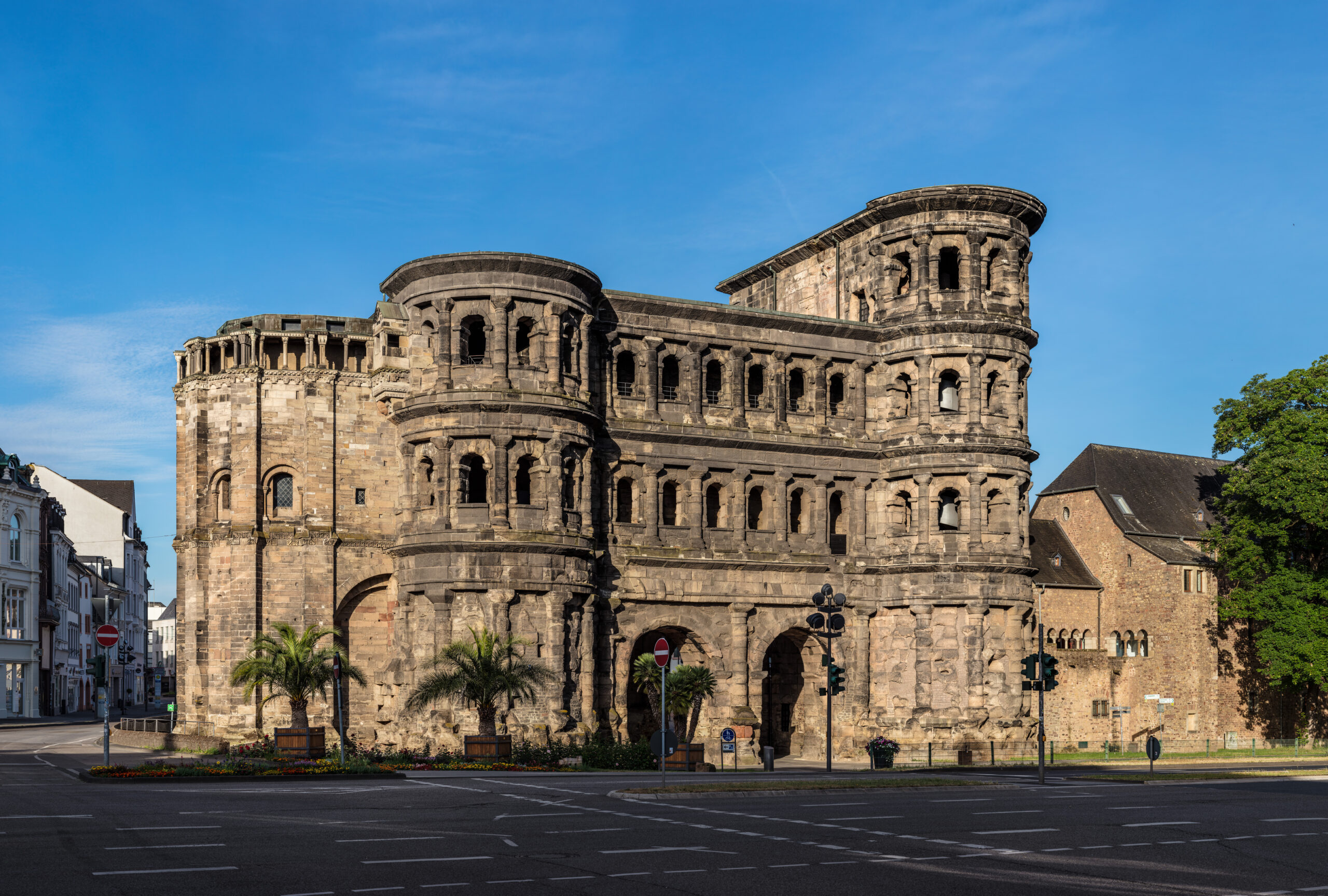The Porta Nigra, a majestic Roman city gate located in Trier, Germany, stands as a timeless testament to the enduring legacy of the Roman Empire in the heart of Europe. As one of the best-preserved Roman structures north of the Alps, the Porta Nigra is not only a symbol of Trier’s ancient history but also a UNESCO World Heritage Site that attracts visitors from around the globe.
Constructed in the late 2nd century AD, during the reign of the Roman Emperor Marcus Aurelius, the Porta Nigra originally served as one of the four gates in the city walls of Augusta Treverorum, as Trier was known in Roman times. The gate’s name, which means “Black Gate” in Latin, is derived from the dark color of its stone, which has darkened over the centuries due to weathering and pollution.
The Porta Nigra is an architectural marvel, characterized by its massive stone blocks, intricate carvings, and robust design. The gate consists of two towers flanking a central passageway, with each tower rising to a height of over 30 meters. The intricately carved friezes and reliefs on the exterior of the gate depict various mythological and historical scenes, showcasing the artistic prowess of Roman craftsmen.
What sets the Porta Nigra apart is its ability to transcend the ages. Originally built as a means of fortification and control, the gate has witnessed the ebb and flow of time, surviving both the decline of the Roman Empire and the subsequent centuries of medieval and modern history. Over the years, the Porta Nigra has served various purposes, including being a church, a defensive structure, and, at one point in the Middle Ages, even a dwelling for a hermit.
The gate’s transformation into a church, dedicated to St. Simeon, occurred in the 11th century. This adaptation not only preserved the structure but also added a layer of religious significance to the ancient Roman monument. The church within the Porta Nigra, with its medieval frescoes and religious artifacts, exemplifies the adaptive reuse of historical structures over time.
The gate’s journey through history includes a brief period of neglect during the medieval era, where the Porta Nigra was threatened with demolition due to its perceived lack of utility. However, its survival owes much to the intervention of the Archbishop of Trier, who recognized its historical value and preserved it as a symbol of the city’s Roman heritage.
In the 19th century, during the Romantic era, the Porta Nigra gained renewed appreciation. The gate’s restoration and preservation efforts were initiated, contributing to its recognition as a UNESCO World Heritage Site in 1986. Today, the Porta Nigra stands proudly as a living testament to the architectural prowess and enduring legacy of Roman engineering.
Visitors to Trier are captivated by the Porta Nigra’s imposing presence and the sense of stepping back in time as they pass through its ancient archways. The interior of the gate provides a glimpse into the construction techniques of the Romans, with its interlocking stone blocks and the remnants of a once intricate system of gates and watchtowers.
The Porta Nigra is not merely a relic of the past; it is a living connection to the history of Trier and the Roman Empire. Its significance goes beyond its architectural grandeur, serving as a symbol of resilience, adaptability, and the enduring impact of ancient civilizations on the cultural landscape of contemporary Europe. The Porta Nigra remains a cherished landmark, inviting modern-day explorers to walk in the footsteps of Roman legionaries and medieval monks, bridging the gap between antiquity and the present day.

